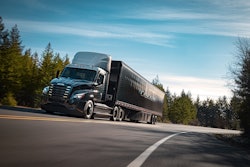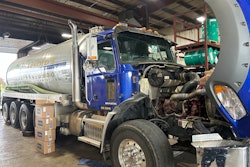Thankfully we are finally seeing real zero-emission trucks in real-world operations. I am constantly amazed at the world-record long-jump leaps of faith analysts and researchers make when promoting one drivetrain technology over another.
And don’t even get me started talking about inherent bias. If your organization or job title includes the words “hydrogen,” “nuclear,” “electric,” “renewable natural gas,” “renewable diesel,” or any of a thousand optimistic qualifiers such as “clean,” then just admit that there is at least some opportunity for bias to influence your work.
Wishful thinking is the world of paper trucks — those trucks that exist purely on paper, or more currently, in bits and bytes on computers. Paper trucks can do anything, anywhere, anytime. Reality can’t impact the projected capabilities of paper trucks, because they exist in a world of optimism. This is the world where all things are possible.
One of the great myths over the last several years is that a hydrogen-fueled truck weighs the same as the diesel that it replaces and that there is no potential freight loss from a hydrogen fueled vehicle. I’d love to know how they reached that conclusion since the actual weights of the day cab trucks are heavier than the comparable diesel vehicles on the road today.
In one recent first-hand experience, the manufacturer publicly stated that the weight of the fuel cell truck was identical to the comparable battery electric truck produced by the same corporation, both of which were on the show floor side-by-side for comparison. Both were, as expected, heavier than the comparable diesel. The potential range differed with the hydrogen fuel cell truck, perhaps twice that of the battery electric one, but diesel still outperformed both of them substantially on maximum range.
OEMs seem to go to some trouble to mask public release of actual tare weights of zero-emission vehicles (ZEVs), but fleets actually driving the vehicles should have no trouble knowing the actual weights as they run them across their scales. As that information begins to leak into the public, hopefully researchers take note and adjust their modeling and reports to more accurately reflect that all ZEVs weigh more than the diesels they are replacing, its just a matter of how much.
Another myth is that somehow battery electric trucks cannot go long distances while carrying commercially viable heavy loads. NACFE Run on Less – Electric DEPOT recently documented in early lessons learned that Class 8 BEVs can rack up significant daily miles while maxing out weight. Daily mileages with short en route charging sessions and slip seating drivers have exceeded 800 miles in one example. Distances of more than 400 miles per day are common from multiple participants.










